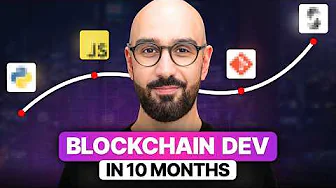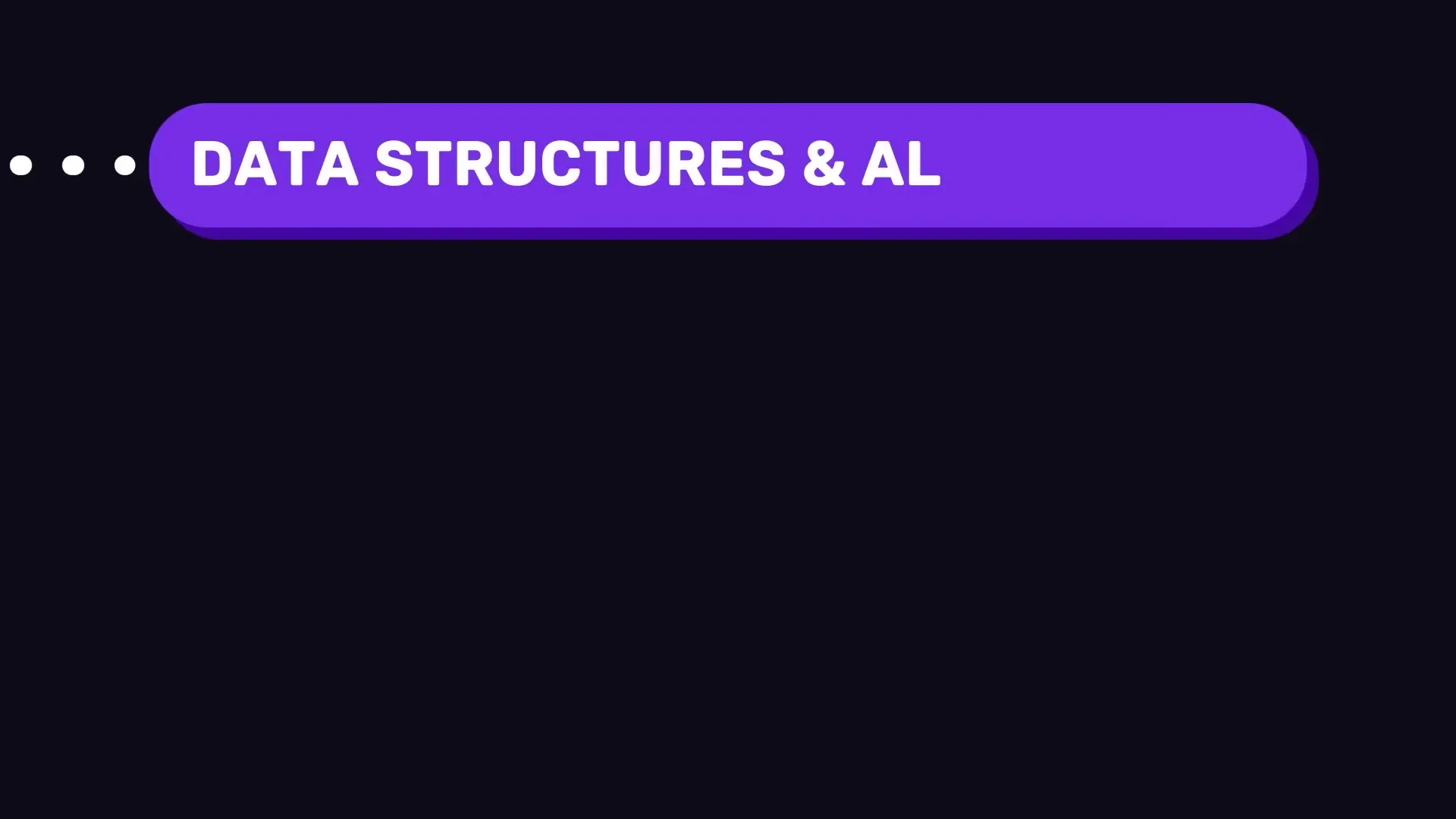
Blockchain development has emerged as one of the most promising career paths in tech. With the growing adoption of decentralized technologies across industries, skilled blockchain developers are increasingly in demand. But how do you break into this field if you're starting from scratch? This comprehensive roadmap will guide you through the essential skills, tools, and timeline needed to become a job-ready blockchain developer in approximately 8-10 months, assuming a dedicated study schedule of 3-5 hours daily.

Foundation: Programming Languages (2 Months)
The first step in your blockchain development journey is mastering a programming language. The two most popular choices for blockchain development are Python and JavaScript.
- Python: Considered the easiest to learn and widely used in blockchain scripting. Great for beginners due to its readable syntax and extensive documentation.
- JavaScript: Common for frontend development and web3 frameworks. Essential if you plan to build complete decentralized applications with interactive user interfaces.
For beginners, it's recommended to focus on one language initially to avoid confusion. Python is often the preferred starting point. With consistent practice of 3-5 hours daily, you can grasp the fundamentals of either language in about 2 months. After mastering Python, picking up JavaScript becomes considerably easier due to transferable programming concepts.
Version Control with Git (2 Weeks)
Git is not a programming language but a crucial tool for tracking code changes and collaborating with other developers. GitHub, a platform that hosts Git repositories, is essential for every developer's workflow.
While Git has numerous features, you only need to master the core functionality for everyday use. Following the 80/20 rule, you'll use about 20% of Git's features 80% of the time. Focus on learning basic commands like init, add, commit, push, pull, and branch management. With 1-2 weeks of consistent practice, you'll develop sufficient proficiency to incorporate Git into your development workflow.
Data Structures and Algorithms (1-2 Months)

Data structures and algorithms are often overlooked by self-taught developers but are crucial for blockchain development. In blockchain environments, every operation has a cost, making efficient data processing and storage essential.
Understanding which data structure to use for specific problems is vital for optimizing blockchain applications. Dedicate 1-2 months to studying classic data structures such as:
- Arrays and linked lists
- Stacks and queues
- Hash tables and maps
- Trees and graphs
- Common sorting and searching algorithms
This knowledge not only improves your code efficiency but is frequently tested in blockchain developer job interviews.
Smart Contract Development with Solidity (1-2 Months)
Once you have a solid programming foundation, you're ready to learn about smart contracts—self-executing programs that run on blockchains according to predefined rules. Solidity is the most popular language for writing smart contracts on the Ethereum blockchain.
Despite its unique name, Solidity shares similarities with other programming languages, making it accessible once you understand the core concepts. Begin your practice with Remix IDE, a web-based development environment for Ethereum smart contracts that allows immediate coding and testing without complex local setup.
After gaining comfort with Remix IDE, advance to Hardhat, a professional-grade local development environment for Ethereum smart contracts. Hardhat provides a comprehensive framework for building, testing, deploying, and debugging smart contracts effectively.
Spend 1-2 months building small projects like basic tokens or NFTs to solidify your understanding of smart contract development.
// Simple ERC-20 Token Example
pragma solidity ^0.8.0;
contract SimpleToken {
string public name;
string public symbol;
uint256 public totalSupply;
mapping(address => uint256) public balanceOf;
constructor(string memory _name, string memory _symbol, uint256 _totalSupply) {
name = _name;
symbol = _symbol;
totalSupply = _totalSupply;
balanceOf[msg.sender] = _totalSupply;
}
function transfer(address _to, uint256 _value) public returns (bool success) {
require(balanceOf[msg.sender] >= _value, "Insufficient balance");
balanceOf[msg.sender] -= _value;
balanceOf[_to] += _value;
return true;
}
}Decentralized Application (DApp) Development (2-3 Months)
After mastering smart contract development, the next step is building decentralized applications (DApps) that allow users to interact with your contracts. DApps look and feel like conventional web or mobile applications but use blockchain networks instead of centralized servers for their core operations.
To build effective DApps, you'll need to learn:
- Frontend frameworks: React is the most popular choice for building user interfaces in the blockchain space. Learning React requires JavaScript knowledge and ideally TypeScript, which is widely used in professional React projects.
- Web3 libraries: Tools like Web3.js or ethers.js are essential for connecting your frontend application to the blockchain. These libraries enable your application to interact with smart contracts, send transactions, and read blockchain data.
Allocate about 2 months to learn JavaScript and TypeScript fundamentals, followed by another 1-2 months focusing on React and Web3 libraries. By the end of this phase, you should be able to build complete decentralized applications that interact with your smart contracts.
Practical Project Development (1-2 Months)
The final phase of your blockchain developer journey involves building comprehensive projects that showcase your skills. These projects should integrate all the components you've learned—from smart contract development to frontend integration with Web3 technologies.
Consider developing projects such as:
- A decentralized exchange (DEX) with basic swap functionality
- An NFT marketplace with minting and trading capabilities
- A decentralized finance (DeFi) application like a simple lending platform
- A blockchain-based voting system or governance platform
These projects will form the portfolio you'll present to potential employers, demonstrating your ability to build functional blockchain applications from concept to deployment.
Job Readiness and Career Prospects
After completing this roadmap, which takes approximately 8-10 months with dedicated daily study, you'll have the necessary skills to apply for entry-level blockchain developer positions. The blockchain industry continues to grow, with demand for skilled developers remaining strong across various sectors including finance, supply chain, healthcare, and gaming.
Blockchain development offers competitive salaries, opportunities for remote work, and the chance to contribute to cutting-edge technology. As you gain experience, you can specialize in areas like security auditing, protocol development, or cross-chain interoperability to further advance your career.
Conclusion
Becoming a blockchain developer requires dedication and consistent effort, but with the structured approach outlined in this roadmap, it's an achievable goal within a 10-month timeframe. By mastering programming fundamentals, version control, data structures, smart contract development, and decentralized application building, you'll position yourself as a valuable candidate in the growing blockchain job market.
Remember that the technology landscape evolves rapidly, so continuous learning will be essential throughout your career. Stay connected with blockchain communities, participate in hackathons, and contribute to open-source projects to keep your skills sharp and expand your professional network.
Let's Watch!
Complete Blockchain Developer Roadmap: From Zero to Job-Ready in 10 Months
Ready to enhance your neural network?
Access our quantum knowledge cores and upgrade your programming abilities.
Initialize Training Sequence